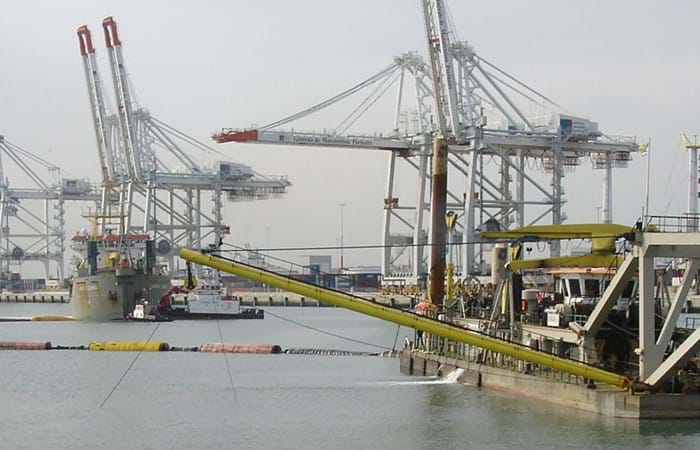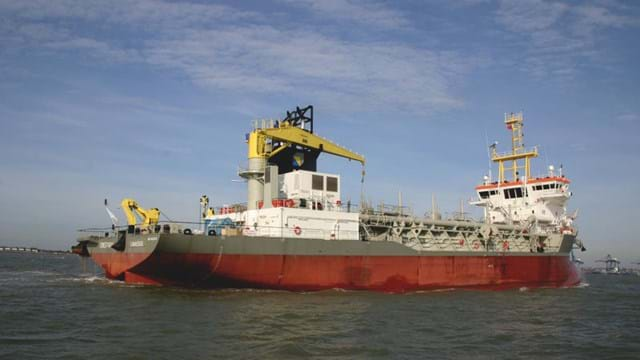Le Havre is the fifth largest container port in Europe and is expanding its facilities: the current 14 quays for container vessels are to be expanded with another 12 (all outside the locks). Port 2000’s rationale centres on Le Havre’s determination to position itself as a leading hub.
The Cutter Suction Dredgers Haarlem and Cyrus were deployed to execute the works. The Haarlem first dredged the top layer (mainly sand). The Cyrus took over for the rougher gravel part. Cyrus began by dredging for the new berths. The dredging required for Berths 1 and 2 was completed in July. The big cutter dredger then switched to the eastern port area and dredged Berths 3 and 4. Work then continued on dredging the turning basin. The berths were being dredged to -15.5 m. and the turning basin to -16.0 m. The dredged material was pumped into three reclamation areas, with a pumping distance varying between 2 km for the gravel and 4.5 km for the sand.
Creation of a bird island
Part of the environmental compensation measures for the Port 2000 project was the creation of 'Ilot Reposoir', an island that will serve as a bird habitat. Ilot Reposoir was constructed south of the Le Havre port extension, on a sandbank called 'Banc du Ratier' which is situated on the opposite side of the river Seine and the access channel to the ports of Honfleur and Rouen. The island has a complex geometry, but in general it can be described as an oval with an opening in the southern side. In size it measures 200 m from the north to the south and 325 m from the east to the west. Various requirements were imposed on the design. For example, the estuary currents should not be affected, the island had to be strong enough to withstand storms, and in particular the island had to meet the needs of its bird populations, especially those of the tern, which is an endangered species. The first phase of the project consisted of constructing a dike of armourstone along the future outline of the island with the Arca. The island was reclaimed with dredged material (sand and gravel) from the approach channel to Le Havre port.

